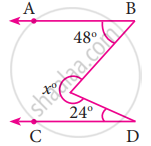Advertisements
Advertisements
प्रश्न
In the figure, given below, ABCD is a square, and ∆ BEC is an equilateral triangle. Find, the case:∠ABE

उत्तर
We know that the sides of a square are equal and each angle is of 90°
Three sides of an equilateral triangle are equal and each angle is of 60.
Therefore, In fig., ABCD is a square and Δ BEC is an equilateral triangle.
(i) ∠ABE = ∠ABC + ∠CBE
= 90° + 60° = 150°
(ii) But in Δ ABE
∠ABE + ∠BEA + ∠BAE = 180° ...............(Angles of a triangle)
⇒ 150° + ∠BAE + ∠BAE = 180° .............(∵ AB = BE)
⇒ 150° + 2 ∠BAE = 180°
⇒ 2 ∠BAE = 180°− 150° = 30°
∴ ∠BAE =`(30°)/2=15°`
APPEARS IN
संबंधित प्रश्न
Find the unknown angles in the given figure:
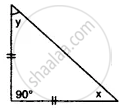
Find the unknown angles in the given figure:
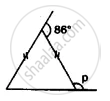
Apply the properties of isosceles and equilateral triangles to find the unknown angles in the given figure:

In an isosceles triangle, each base angle is four times its vertical angle. Find all the angles of the triangle.
The ratio between a base angle and the vertical angle of an isosceles triangle is 1: 4. Find each angle of the triangle.
In the given figure, BI is the bisector of ∠ABC and Cl is the bisector of ∠ACB. Find ∠BIC.
In ∆ ABC, BA and BC are produced. Find the angles a and h. if AB = BC.
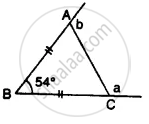
Find x in Figure Given: DA = DB = DC, BD bisects ∠ABC and∠ADB = 70°.
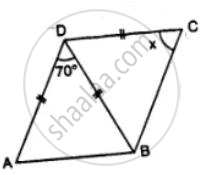
In the figure, AB is parallel to CD, find x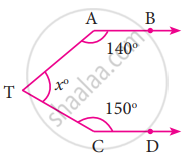
In the figure, AB is parallel to CD, find x